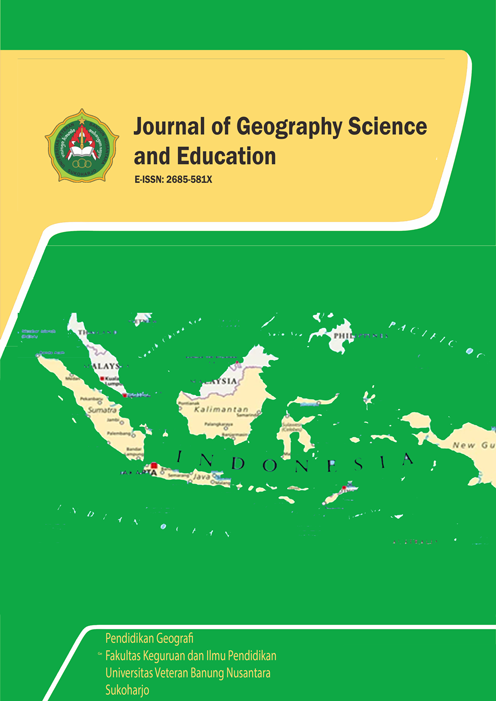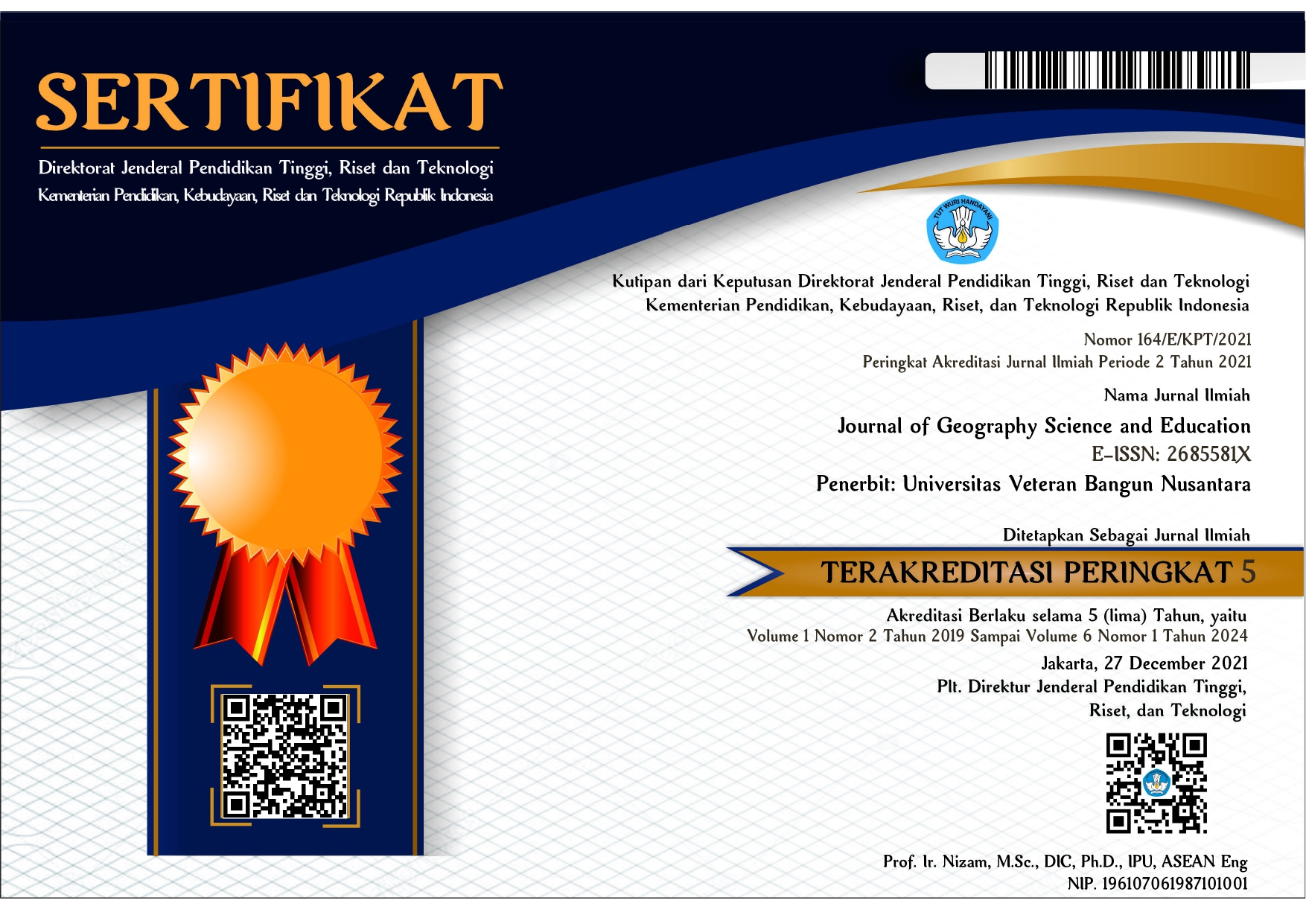Basari, Syifa Fadhila The Relationship Between Housing Density and Family Resilience In Urban Densely Populated Areas In Kampung Rawa Urban Village, Central Jakarta Administrative City
Abstrak
Keluarga yang tinggal di permukiman padat penduduk atau bermukim di wilayah yang rentan terhadap berbagai masalah, baik ekonomi, pendidikan, kesehatan dan masalah sosial lainnya menyebabkan keluarga tersebut tidak dapat menjalankan peran dan fungsinya dengan baik. Masyarakat di Kampung Rawa sering kali bergantung pada bantuan pemerintah untuk memenuhi kebutuhan dasar mereka untuk mempertahankan keberlangsungan ketahanan ekonomi mereka, yang juga berkaitan dengan ketahanan sosial dan psikologis mereka. Hal ini cenderung menciptakan ketergantungan yang menghambat inisiatif individu dan keluarga untuk mandiri. Penelitian ini bertujuan untuk mengetahui hubungan kepadatan hunian dengan ketahanan keluarga di perkotaan padat penduduk. Penelitian ini merupakan penelitian kuantitatif dengan menggunakan metode survey, dengan pendekatan korelasi. Pengambilan data pada penelitian ini menggunakan kuesioner. Pengambilan data menggunakan Teknik cluster sampling dengan 476 ibu rumah tangga di RW 2, Kelurahan Kampung Rawa, Jakarta Pusat. Pengumpulan data penelitian mulai bulan Maret 2024 sampai dengan September 2024. Teknik analisis data uji prasyarat menggunakan uji normalitas Kolmogorov-Smirnov serta uji hipotesis menggunakan Uji Koefisien Korelasi Pearson Product Moment dan Uji t. Hasil penelitian menunjukan nilai r = 0,007 artinya memiliki hubungan sangat lemah atau H0 diterima. Artinya bahwa tidak ada hubungan antara kepdatan hunian dengan ketahanan keluarga pada wilayah padat penduduk perkotaan di kelurahan kampung rawa kota administrasi jakarta pusat. Implikasi penelitian ini, dengan memperhatikan kapasitas hunian, keluarga dapat menciptakan lingkungan yang lebih nyaman dan sehat. Keluarga yang mengedepankan perencanaan keluarga yang bijaksana, keluarga dapat meminimalisir risiko kepadatan yang dapat menimbulkan berbagai masalah, baik fisik maupun psikologis.
Kata Kunci: Hunian; Kepadatan; Penduduk; Ketahanan Keluarga.
Unduhan
Unduhan
Diterbitkan
Cara Mengutip
Terbitan
Bagian
Lisensi
Hak Cipta (c) 2025 Syifa Fadhila Basari, Uswatun, Kabbaro

Artikel ini berlisensiCreative Commons Attribution-ShareAlike 4.0 International License.
License and Copyright Agreement
In submitting the manuscript to the journal, the authors certify that:
- They are authorized by their co-authors to enter into these arrangements.
- The work described has not been formally published before, except in the form of an abstract or as part of a published lecture, review, thesis, or overlay journal. Please also carefully read JGSE's Posting Your Article Policy at http://pubs2.ascee.org/index.php/ijele/about/editorialPolicies#custom-5
- That it is not under consideration for publication elsewhere,
- That its publication has been approved by all the author(s) and by the responsible authorities – tacitly or explicitly – of the institutes where the work has been carried out.
- They secure the right to reproduce any material that has already been published or copyrighted elsewhere.
- They agree to the following license and copyright agreement.
Copyright
Authors who publish with Journal of Geography Science and Education agree to the following terms:
- Authors retain copyright and grant the journal right of first publication with the work simultaneously licensed under a Creative Commons Attribution License (CC BY-SA 4.0) that allows others to share the work with an acknowledgment of the work's authorship and initial publication in this journal.
- Authors are able to enter into separate, additional contractual arrangements for the non-exclusive distribution of the journal's published version of the work (e.g., post it to an institutional repository or publish it in a book), with an acknowledgment of its initial publication in this journal.
- Authors are permitted and encouraged to post their work online (e.g., in institutional repositories or on their website) prior to and during the submission process, as it can lead to productive exchanges, as well as earlier and greater citation of published work.
Licensing for Data Publication
Journal of Geography Science and Education use a variety of waivers and licenses, that are specifically designed for and appropriate for the treatment of data:
- Open Data Commons Attribution License, http://www.opendatacommons.org/licenses/by/1.0/ (default)
- Creative Commons CC-Zero Waiver, http://creativecommons.org/publicdomain/zero/1.0/
- Open Data Commons Public Domain Dedication and Licence, http://www.opendatacommons.org/licenses/pddl/1-0/
Other data publishing licenses may be allowed as exceptions (subject to approval by the editor on a case-by-case basis) and should be justified with a written statement from the author, which will be published with the article.
Open Data and Software Publishing and Sharing
The journal strives to maximize the replicability of the research published in it. Authors are thus required to share all data, code or protocols underlying the research reported in their articles. Exceptions are permitted but have to be justified in a written public statement accompanying the article.
The associated persistent identifiers (e.g. DOI, or others) of the dataset(s) must be included in the data or software resources section of the article. Reference(s) to datasets and software should also be included in the reference list of the article with DOIs (where available). Where no domain-specific data repository exists, authors should deposit their datasets in a general repository such as ZENODO, Dryad, Dataverse, or others.
Small data may also be published as data files or packages supplementary to a research article, however, the authors should prefer in all cases a deposition in data repositories.










